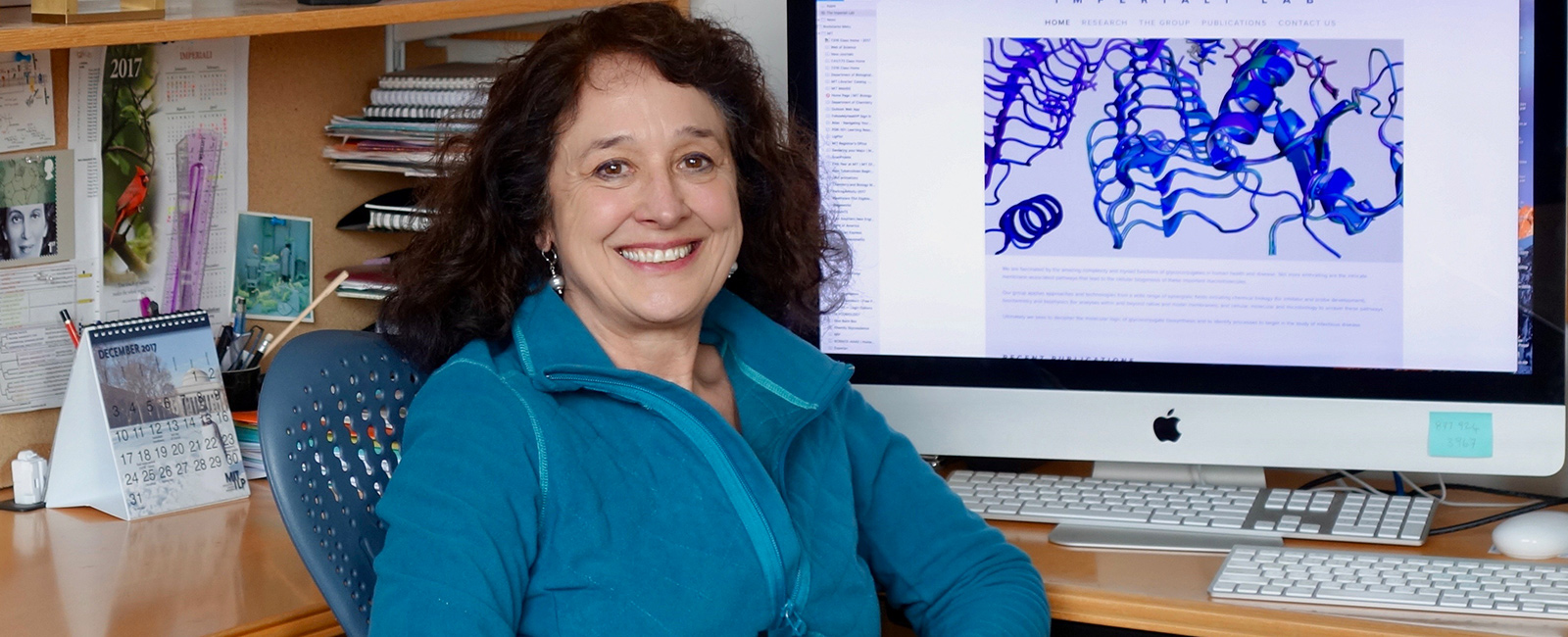Research in the Imperiali group is concerned with diverse aspects of protein structure, function, and design. The lab employs a multidisciplinary approach involving synthesis, state-of-the-art spectroscopy, molecular modeling, enzymology, and molecular biology to address fundamental problems at the interface of chemistry and biology.
In one area of research Imperiali is investigating the central biological issue of protein modification. In particular, the group has focused on understanding enzyme catalyzed protein glycosylation. This objective presents a significant challenge because the substrates are densely functionalized proteins, and the opportunities for competing processes are innumerable. Asparagine-linked (N-linked) glycosylation is an essential protein modification that is associated with all domains of life. N-linked glycosylation occurs via a complex and integrated sequence of enzymatic transformations that result first in the assembly of a key membrane-bound polyprenyl-pyrophosphate-linked glycosyl donor. The pathway culminates with glycosyl transfer to protein, which is catalyzed by the integral membrane enzyme oligosaccharyl transferase (OTase). N-linked glycans play profound and critical structural and functional roles in living organisms. Current research in the Imperiali group seeks to provide inhibitors as tools to probe the roles of glycosylation in pathogenic bacteria, methodological approaches for investigating the coordinated action of glycosylation pathway enzymes that function at the membrane interface, and active, monomeric OTases from prokaryotic sources for detailed biochemical and biophysical analysis.
A second major research initiative in the Imperiali group focuses on the design, synthesis and application of chemical tools for studying complex biological systems. In particular efforts target novel fluorescent and luminescent probes, which can play an essential role in biological studies by helping to define the spatial and temporal dynamics of critical cellular constituents.
Due to the essential signaling roles played by intracellular protein phosphorylation, the focus of recent studies in the group has been on protein kinases as critical targets for probe development. In the area of signal transduction, new approaches including general strategies for the assembly of synthetic and semi-synthetic probes for interrogating the specific function of proteins involved in directed cell migration and cell cycle control have been developed. These probes include newly designed fluorescent amino acids for defining the dynamics of protein kinase activities and phosphorylation-dependent protein-protein interactions in addition to methods for the assembly of caged phosphopeptides and proteins for examining phosphorylation-mediated cellular activities.
Ultimately, an arsenal of chemical probes for monitoring protein phosphorylation and chemically caged analogues of key phosphoprotein mediators will contribute to the understanding of the spatial and temporal profiles of protein kinases and phosphoproteins in complex cellular pathways.

